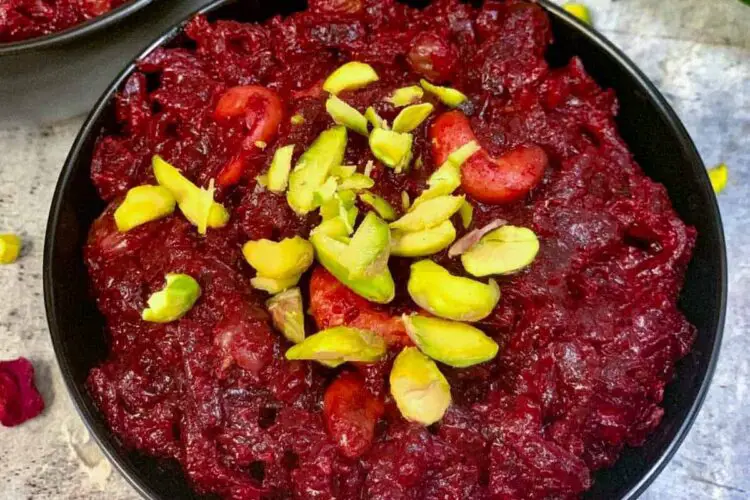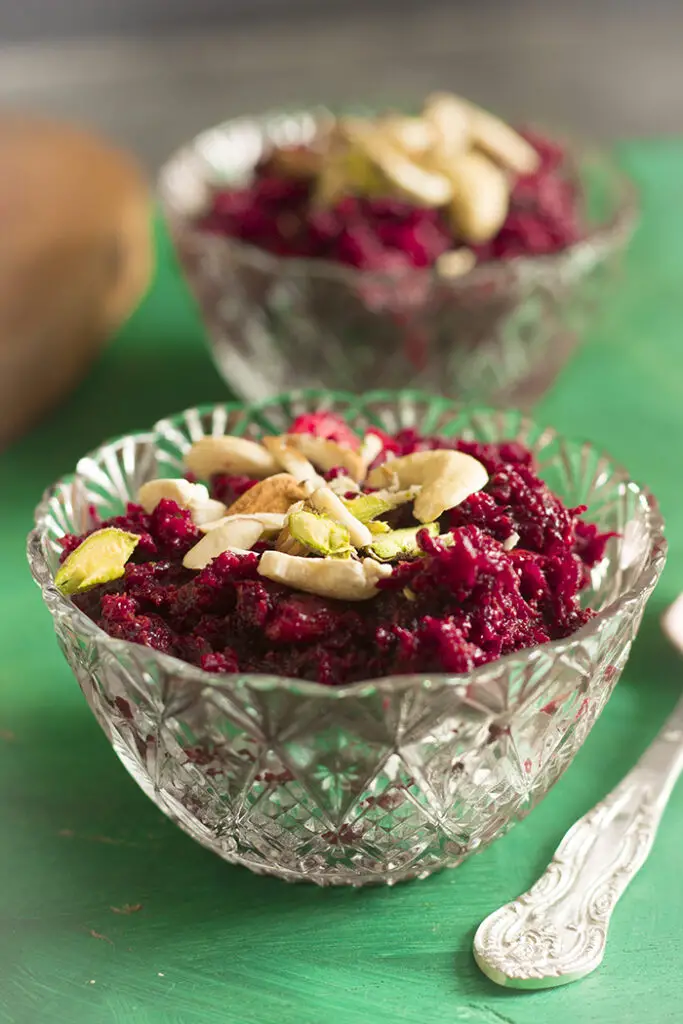Beetroot Halwa, a delightful Indian dessert, combines the earthy richness of beetroots with the sweetness of sugar and the creaminess of milk. This article unfolds the secrets behind mastering this culinary gem, offering insights into its history, nutritional benefits, and the perfect method to create a Beetroot Halwa that will leave your taste buds craving for more.
Beetroot Halwa traces its roots to the heart of Indian culinary traditions. With a history deeply embedded in regional kitchens, this sweet dish has become a symbol of celebration and festivity. In Indian households, this Halwa holds a special place, often prepared during festivals, weddings, and other joyous occasions. Its vibrant color and rich taste make it a favorite among all age groups.
Benefits of Beetroot Halwa
Rich in Antioxidants
Beyond its delicious taste, Beetroot Halwa boasts health benefits. Packed with antioxidants, it supports overall well-being and contributes to a healthy lifestyle.
Nutrient-Packed Profile
Beetroot is a nutrient powerhouse, offering essential vitamins and minerals. When transformed into Halwa, it becomes a delightful way to incorporate these nutrients into your diet.
Ingredients:
- 2 cups grated beetroot
- 1 cup full-fat milk
- 1/2 cup sugar (adjust according to your taste)
- 2 tablespoons ghee (clarified butter)
- 1/4 teaspoon cardamom powder
- 2 tablespoons chopped nuts (almonds, cashews, and pistachios)
- A pinch of saffron strands (optional)
Instructions:
- Prepare the Beetroot:
- Peel and grate the beetroot using a fine grater.
- Cooking Beetroot:
- Heat 1 tablespoon of ghee in a pan.
- Add the grated beetroot and sauté for 5-7 minutes until it becomes soft.
- Adding Milk:
- Pour in the full-fat milk and stir well.
- Cook on medium heat, stirring occasionally, until the beetroot is cooked and the milk is absorbed. This may take around 15-20 minutes.
- Adding Sugar:
- Add sugar and continue to cook. The sugar will release water, so continue cooking until the mixture thickens again.
- Adding Ghee and Flavors:
- Add the remaining tablespoon of ghee and cardamom powder.
- Continue stirring and cooking until the halwa reaches a thick consistency and starts leaving the sides of the pan.
- Garnishing:
- Add chopped nuts and saffron strands. Mix well.
- Serve:
- Once the halwa reaches the desired consistency, remove it from heat.
- Garnish with more nuts if desired.
- Serve warm.
FAQs
- How can I make the Halwa without sugar?
For a sugar-free version, consider using natural sweeteners like dates or stevia. Adjust the quantity to suit your taste.
- Are there savory versions of Beetroot Halwa?
Absolutely! Explore savory adaptations by reducing the sugar content and adding spices like cumin and black pepper for a unique twist.
- Can Beetroot Halwa be frozen for later consumption?
Yes, the Halwa can be frozen in airtight containers for up to a month. Thaw it in the refrigerator before reheating.
- What are the nutritional benefits of Beetroot Halwa?
This Halwa offers a good dose of vitamins, minerals, and antioxidants. It’s a tasty way to incorporate nutrition into your dessert.
- Are any recommended beverage pairings with Beetroot Halwa?
Pair Beetroot Halwa with a warm cup of masala chai for a delightful combination of flavors. The spiciness of the tea complements the sweetness of the Halwa.
Conclusion
In conclusion, Beetroot Halwa is not just a dessert; it’s a journey through tradition, flavor, and cultural significance. Whether enjoyed during festivals, weddings, or as a creative experiment in the kitchen, the Halwa continues to capture hearts with its delightful taste and vibrant character.



